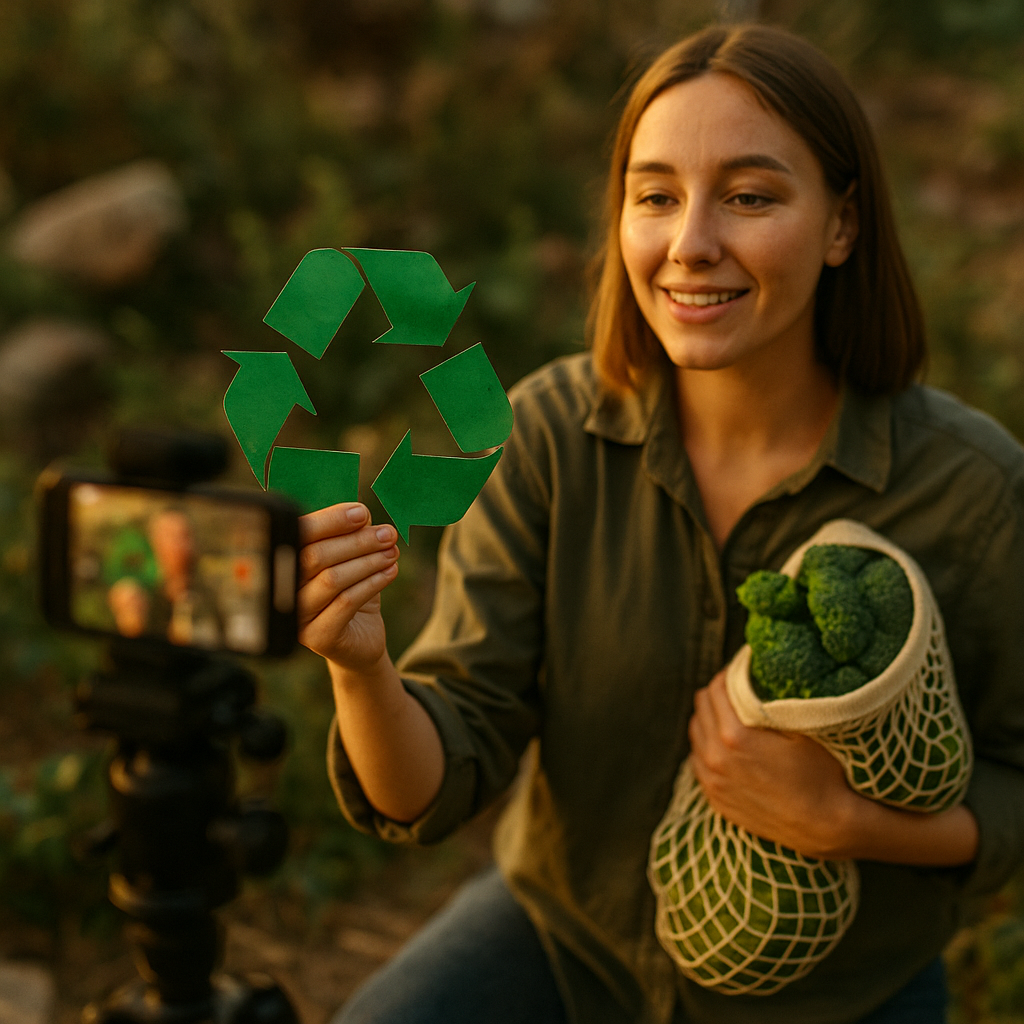Environmental claims in influencer marketing have surged as brands strive to align with eco-conscious consumers. But with this rise comes the danger of greenwashing—exaggerated or false environmental endorsements. This article unpacks the risks, regulations, and best practices surrounding influencer-led environmental messaging. Discover how ethical influencers and brands can build lasting trust while avoiding the greenwashing trap.
Greenwashing in Influencer Marketing: Growing Risks and Realities
Greenwashing—making misleading environmental claims—has become a significant concern in influencer marketing. Brands are leveraging influencers’ reach to promote sustainable products, but not all claims stand up to scrutiny. According to the International Consumer Protection Enforcement Network, over 40% of environmental claims in 2024 were potentially deceptive, a jump from previous years.
Influencers serve as trusted voices, especially for Gen Z and Millennials who prioritize authenticity and sustainability. However, if an influencer promotes a “green” product that doesn’t meet environmental standards, the fallout can be swift: regulatory fines, damaged reputations, and loss of consumer trust. With increasing consumer awareness and tighter regulations, the risks of greenwashing are higher than ever.
Truthful Sustainability Claims: Regulatory Landscape and Guidelines
Governments and regulatory bodies have strengthened oversight of marketing claims to protect consumers against greenwashing. The European Union’s Green Claims Directive, enforced as of January 2025, sets strict criteria for environmental advertising. Likewise, the US Federal Trade Commission’s “Green Guides” require marketers—including influencers—to substantiate any environmental claims with evidence.
- Disclosures: Influencers must clearly disclose paid partnerships and any connection to a brand.
- Evidence: Claims must be backed by credible, verifiable sources.
- Specificity: Broad, vague phrases like “eco-friendly” or “natural” are discouraged unless thoroughly explained.
Violations can lead to financial penalties for both brands and influencers. In late 2024, several high-profile influencers faced fines for posting unsubstantiated “carbon-neutral” claims about beauty products. As a result, both brands and creators are under pressure to prioritize accuracy and transparency.
Influencer Marketing Ethics: Building Trust with Authentic Environmental Messaging
EEAT (Experience, Expertise, Authoritativeness, and Trustworthiness) isn’t just for journalists or scientists. In 2025, influencers must demonstrate the same commitment when making environmental claims. Building long-term credibility with audiences depends on ethical practices, including:
- Transparency: Disclose sponsorships, partnerships, and the extent of personal product use or experience.
- Research: Only promote brands whose sustainability credentials have been independently validated.
- Education: Clearly explain complex terms like carbon offsetting or biodegradability.
- Feedback: Listen to audience questions and correct any miscommunications promptly.
When influencers follow these ethical principles, they position themselves as reliable sources rather than mere brand conduits. Maintaining trust is not only good practice but also a competitive advantage in the crowded field of green marketing.
Consumer Perceptions and the Impact of Greenwashing on Brand Value
The gap between what brands claim and what they deliver can significantly impact consumer decision-making. According to a 2025 Nielsen survey, 76% of consumers said they would boycott brands caught greenwashing, even if their favorite influencer was involved in the campaign. Influencer-led greenwashing damages not only the brand but can undermine the influencer’s career and credibility.
Clear, evidence-based messaging leads to higher consumer engagement and repeat sales, while vague or exaggerated claims result in skepticism. In an era where ethical consumption is a core value, brands and influencers failing to meet these expectations quickly face backlash.
Future-Proofing Influencer Campaigns: Best Practices Against Greenwashing
With regulations tightening and consumers becoming more informed, brands and influencers must upgrade their approach to environmental marketing. Consider these best practices for future-proof campaigns:
- Audit Claims: Regularly review marketing materials for accuracy. Consult with environmental experts if needed.
- Standardize Disclosures: Use consistent, app-based disclosure statements to leave no ambiguity for viewers.
- Collaborate Authentically: Partner with brands that have a verified sustainability mission, rather than those using “green” as a marketing tactic.
- Engage Audiences: Open channels for consumer questions and feedback about product sustainability and influencer choices.
- Stay Updated: Keep abreast of evolving legislation and adapt messaging as new guidelines emerge.
Integrating these practices reduces the risk of greenwashing and helps make influencer marketing a force for genuine positive change.
Conclusion: Environmental Claims Require Responsibility and Transparency
Environmental claims in influencer marketing are powerful but carry real risks if mishandled. Staying compliant and authentic is essential for influencers and brands aiming for long-term credibility. Transparent, evidence-backed messaging not only meets regulatory demands but also fosters consumer trust—a vital asset in 2025’s sustainability-focused marketplace.
FAQs: Environmental Claims in Influencer Marketing
-
What is greenwashing in influencer marketing?
Greenwashing happens when influencers promote a product as environmentally friendly without credible evidence, exaggerating or misrepresenting its sustainability benefits.
-
What are some examples of greenwashing by influencers?
Examples include claiming a fashion line is “100% sustainable” without proof, or promoting a product as “eco-friendly” when it contains harmful materials.
-
What regulations affect influencer marketing and environmental claims in 2025?
The EU’s Green Claims Directive and the US FTC Green Guides require substantiated, transparent environmental marketing from both brands and influencers, with financial penalties for violations.
-
How can influencers avoid greenwashing?
They should disclose partnerships, only make claims supported by reliable data, work with brands with certified sustainability measures, and engage in ongoing education about new regulations and standards.
-
Why is transparency important in sustainability messaging?
Transparency builds trust between influencers, brands, and consumers. It ensures audiences can make genuinely informed purchasing decisions and protects all parties from legal or reputational risks.
